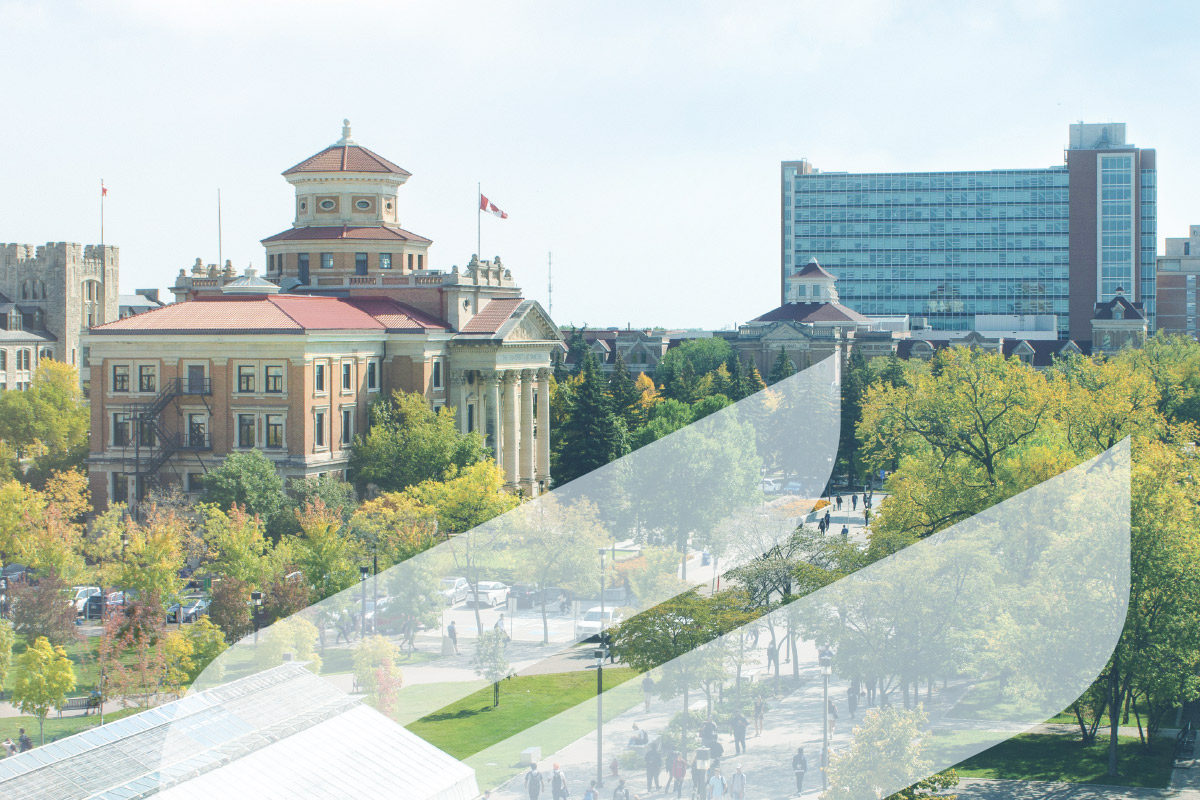
Budgeting our priorities together
President holds second-annual Budget Town Hall to review financial health and budget model
President Michael Benarroch hosted his second-annual Budget Town Hall on Sept. 26 with a crowd of more than 250 people gathered online and in Marshall McLuhan Hall, to discuss UM’s financial health and budget allocations.
He was joined by Dr. Diane Hiebert-Murphy, Provost and Vice-President (Academic), and Mike Emslie, UM’s CFO and comptroller. They presented on the current budget year and some of the decisions that this community has been making around how to allocate revenue.
Benarroch recalled hosting similar town halls as a former Dean and former provost at Toronto Metropolitan University. He praised the UM community for being engaged in the process and learning about how financial decisions are made at the university, which has led to more informed discussions on how UM can adjust its budget model.
This year’s presentation once again focused on UM’s operating budget.
About 54 per cent of UM’s operating revenue comes from a provincial government grant. Tuition revenue represents the second largest source of funding (31 per cent), with tuition fees for domestic students being regulated by the Province of Manitoba. On the expenditures side of the ledger, salaries and benefits account for 75 per cent of operating expenses.
“Government policy has a significant impact on the university’s financial resources, and salaries are a very significant component of the university’s operating expenses,” said Emslie. “As salary increases from recent collective agreements have been implemented, and activity on campus has returned, the university’s annual operating surplus has declined relative to prior years.”
The Provost reminded the audience that tuition levels at UM are well below the national average. Hiebert-Murphy noted that if UM was at the national average, it would have an additional $30 million to invest in its teaching and learning mission annually.
During the question period, a biological sciences instructor asked if the university had a plan to invest in professor-track faculty positions in the same way it has a plan for addressing its deferred maintenance. The Provost agreed this is an area that needs collegial discussion but that ultimately staffing issues are addressed at the unit-level.
“These decisions are difficult when you are given a flat grant,” Hiebert-Murphy said. “We are continuing to invest in salary increases to support our faculty and staff while also investing as we can in other academic priorities such as filling faculty positions and providing supports for student and research.”
The President also noted that he doesn’t want our community to see this conversation as deferred maintenance versus faculty investment.
“We’ve actually fallen way further behind on deferred maintenance than we have on supporting the people here at the university,” Benarroch said, stressing that separate government grants are helping address deferred maintenance, which is key to ensuring functioning teaching and learning spaces. “And so it can’t be an either-or… We’ve got an infrastructure issue here on campus and we’ve been pushing government hard to be able to fund that.”
This budget, Benarroch and Hiebert-Murphy noted, is weighing these considerations responsibly and is investing $14.5 million in one-time, strategic priorities, including:
- scholarships, bursaries and student financial aid (additional $3 million)
- research grants ($2.5 million to provide matching funds)
- classroom and lab upgrades ($4.5 million)
- accessibility enhancements ($3 million)
- HVAC upgrades to ensure UM operates optimal ventilations systems ($1.5 million).
The budget also allocated a $7.7 million pool of Strategic Initiative funds < https://news.umanitoba.ca/strategic-initiatives-fund-projects-announced/> to faculties and units that are advancing institutional priorities.
Yet UM, like most of Canada’s top universities, is an aging university and that comes with hefty financial costs to deal with maintenance.
“We have over 100 buildings past an average age of 50. I think we all know that past 50, things start to go bad, and we are experiencing that on campus,” Hiebert-Murphy said.
UM is responsible for its own roads and sewer, which carry large price tags. Then there is the $90 million that has to be invested over the next 10 years to upgrade UM’s power grid, which can no longer be maintained and must now be replaced. If there is a bright spot here, it is that the Province provided UM with $12.6 million to address some of these maintenance matters in the 2023/24 budget.
Going forward, Emslie noted that UM is projecting expenses to grow more quickly than revenue over the next few years—an issue raised at last year’s Town Hall—and so to better enable the university to weather this period, UM will continue its multi-year budget approach in the expectation that this makes units better able to react and responsibly manage funds over the next few years.
“Overall, however, the university is in pretty solid financial shape,” Emslie said. Hiebert-Murphy added, “We are taking a balanced approach to managing our budget, reviewing our budget model to ensure that resources are allocated to sustainably support the University’s mission.”
Missed the town hall? Access the presentation online, watch the archive on YouTube and submit any questions to BudgetConsultation@umanitoba.ca.






